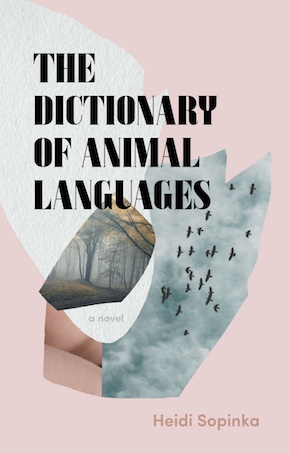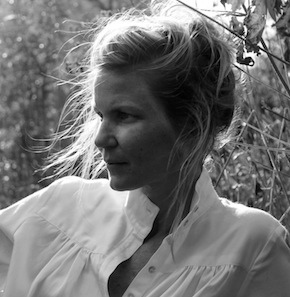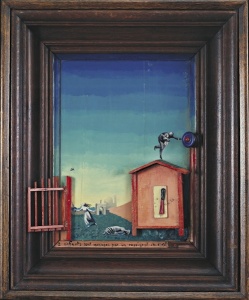Answers without questions
by Mika Provata-Carlone
“A distinctive, if unsettling, pleasure.” Rivka Galchen
The Dictionary of Animal Languages is a single-voice narrative that moves concurrently on two planes of being; it stretches itself over dual dimensions of time and space, and lays claim on a bifocal understanding of the self. Not a dichotomised self, but a fully alert, almost live-wire vivid, split consciousness, whose strands interlace ineluctably, creating an inescapable web of pastness and presentness. An artist, whose past is filled with trauma and a certain glory of notoriety and talent, is now a natural scientist seeking the meaning of creation and even a mystical revelation in the transcribing of the communicative behaviour of birds. The anthropomorphic animal symbolism of her now-abandoned paintings engenders the codified titles of a logbook of existence suspended, yet by no means denied. An old woman reflects on her younger self – the risks, rewards, thrills and dark pain of her journey to self-definition and her encounters with a particular set of 1930s humanity: the Surrealists. In her present state, she must face a memory she cannot bear, and also the gaps in her recollection of her life that threaten a very precarious balance between being and non-being. The woman is a solitary figure, a kind of female Don Quixote fighting real giants and hallucinatory windmills. She has a Sancho Panza-worthy companion called Skeet. The woman is called Ivory Frame, to evoke every ivory tower of art, the reductive frames we define in order to circumscribe life, or even to echo her obsessive fascination with birds: Ivory can be said to live in a kind of aviary world.
These are constituent elements that could have made for a grand story. Especially since at the back of Sopinka’s plot, and as an explicitly evoked authorial reference (another ‘frame’), lies one of the most extraordinary lives of the 20th century, that of the surrealist painter Leonora Carrington. Disappointingly, Sopinka’s novel is unequal to her task, whether that is to create a ghost-narrative of Carrington or to write an original story that grips us in its struggle between mad genius and human fragility, in its quest for the absolute and in its yearning for a place of being and belonging. The storyline of A Dictionary of Animal Languages is syncopated and often meandering, elliptical rather than economical, and somewhat endless. It involves two confluent streams of consciousness, one hazy to represent the past, one of sober reminiscence to underscore the critical urgency (and menace) of the present, yet both are too laboured to be natural – even, or especially, for a heightened sensibility such as Carrington’s – or indeed Frame’s.
Numerous hanging declarations inevitably leave us with a rather tired aftertaste of overstated singularity rather than exceptional difference, of the otherness that is genius.”
Sopinka’s discourse is overburdened by generalisations and saturated with rather grand philosophical statements and life-pronouncements, which inevitably become tainted with a sense of overpowering ego, rather than the strong sense of self that is the attraction of a personality such as Carrington’s. “I love history that lives in the dirt and cracks and stains of things,” a friend of Frame exclaims early on in the story, and the numerous similar, hanging declarations inevitably leave us with a rather tired aftertaste of overstated singularity rather than exceptional difference, of the otherness that is genius. Tellingly, a repeated statement throughout the book is that “Inside, there is a growing sense of apartness.”
Carrington is not named in the book, nor are others who formed her world in Paris at the time, when she was perhaps the only surrealist woman to stand her ground in a company of rather self-assertive men (she is the only woman invited to contribute to Breton’s Anthology of Black Humour). We are reminded that Sopinka interviewed Carrington in her Mexico City home for a 2009 interview for The Believer. We could choose to read the story without looking at its shadow, yet The Dictionary of Animal Languages is meticulously embroidered with the minutiae and the larger sign posts of Carrington’s life and work, and of the artistic brotherhood to which she belonged (and from which she finally escaped). And the interview Sopinka managed to secure with Carrington becomes in the novel the undisguised backbone of an interview with the fictional character Lev Volkov, an uncomfortable avatar for Max Ernst. Ernst’s favourite alter ego in his paintings was a bird called Loplop (he was called the Bird Superior, the Prince of Birds, of the Surrealists) that assumes several roles and missions, whether prophetic, initiatory, or harrowing, as in Two Children Are Threatened by a Nightingale (1924), which gripped Carrington before she had even met Ernst. Carrington would also pick on the theme of birds, their oracular sounds and silences, their penetrating gazes and their transcendental poise. Ivory Frame’s preoccupation with birds at the same time demythologises and mystifies that power of attraction.
The novel is also carefully embellished with somewhat sketchy French references, etymologies and selected place names to conjure up a Surrealist Paris as it almost certainly never was: the result is a pointedly landmarked Paris that is a little too easily familiar, from the Jardin des Plantes, to the Bibliothèque Sainte Géneviève, the Café de Flore (Les Deux Magots would be reserved for another radical generation), and the Brasserie Lipp across the road. To contrast this rather vintage vignette image of ardent bohemianism, Sopinka displaces her invented artist to “the North”, liberally painting vast landscapes of human desolation and animal prosperity, of human frugality, idealistic asceticism, and a certain 21st-century version of globalist spiritualism and animism. It is an intriguing transformation for her Ivory Frame, now endowed with a somewhat eco-maiden style and rhetoric.
Hers is a very intricate story, edgily balanced between the feral and the subconscious, in a narrative relay race between a woman’s youth and the twilight of her old age.”
Sopinka uses big authorial gestures with great confidence, and opts for very rich and ornate poetics, within an intensely self-reflexive writing, where the author seems burningly aware of the otherness and the tautology involved in the act of creating. Hers is a very intricate story, edgily balanced between the feral and the subconscious, in a narrative relay race between a woman’s youth and the twilight of her old age. Underneath what can seem heavily layered fiction, there is, nonetheless, a steely anatomy of human cruelty, emotionlessness, and socio-clinical apathy. Also an opulent inventory of words of wisdom, of voices with stronger timbre and even more resounding messages.
Sopinka seems reluctant to choose between truth and new fictional creation. She also seems unsatisfied with Leonora Carrington’s unique combination of contemplative self-effacement and transgressive individuality. Art, as Carrington practised it, is not impactful enough, it would seem, so out goes painting, and in comes a Jane Goodall variety of animal ethology and activism, including a self-conscious effort not to anthropomorphise the research subjects, while extolling human categorising as a way to a new, sublime communion.
It is a sadly missed opportunity to create an original and quite extraordinary tale that would pick up the threads of Carrington’s life and weave them into a tapestry worthy of her enchanted tableaux of human frailty, beauty, but also horror and darkness. One difficulty with Sopinka’s narrative is not only that Ivory Frame is not Leonora Carrington, but crucially that she is not someone of her time, point of civilisation, moment of history, level of sensitivity, or even language. Carrington’s life, voice and work are full of astonishment, shock and wonder, and anyone who will seek even the briefest encounter with her writings, her paintings and sculptures, and the labyrinthine ways of her biography and her psyche, cannot but be enthralled and mesmerised, even if the questions outweigh the answers. And perhaps this is just the point. Carrington refused stolid mottos, distillations and reductions of her work or its meaning, of her life or its purpose. She delighted in a very phatic, even if often provocative, style of diction, in a spontaneous, readily recognisable deadpan sense of humour that belied the sensitivity and the profound humanity lying underneath. “The maid… seems generally opposed to the rest of humanity. I do not believe that she puts me in a human category, so our relationship is not disagreeable” is a rather celebrated statement from The Hearing Trumpet.
Sopinka tries too hard to give her a poetic romanticism Carrington never desired or needed. She was never either a victimised surrealist muse (attempts to circumscribe her as such inevitably failed), a femme-enfant passively evoking the eternally feminine for the edification of adoring domineering males, nor a melodramatic femme fatale. She was rather an exorbitant, extravagant, singularly inspired Edith Wharton or Karen Blixen of her time, with the jolly wickedness of Orwell, perhaps, at his most flippant, the hyperbolic, straight-faced kind of morbid Anglo-Saxon humour typical of the early 20th century. In Edward James’ words, she was “a ruthless English intellectual in revolt against all the hypocrisies of her homeland” and she channelled her pitiless criticism by means of the most dissident comedy. One thing The Dictionary of Animal Languages lacks is a sense of humour that survives devastation, an attachment to life that retrieves the reason behind madness.
Carrington’s work is a feast for the mind and the senses. It is a vast display of the human psyche at its most precarious and indomitable, as well as a chronicling of artistic sensibility and craft, its catalytic power to record and to reveal, especially to heal, since Hieronymus Bosch, the trecento and quattrocento, and the pre-Christian rites of Mexico, to Surrealism’s psychic automatism, and what Carrington called her “hypnagogic visions”. It is also the narrative of a particularly troubled and evocative life, a tale of woe, cruelty, madness, but also joy and very sharp wisdom. Carrington’s recorded interviews are precious in their laconic richness, in their delicate austerity. When talking about her work, she reveals herself as someone with rare clarity and philosophical insight, and as someone who, certainly by the end of her life, succeeded quite uniquely, and fascinatingly, in extracting a vital meaning out of life’s complexity, ambiguity, promise or despair, its structures and chaos.
She was above all against intellectualisations: “I don’t think in terms of explanation. I think in terms of vision in painting.” Its power, inspiration, value and possibility lie beyond the human: “it comes from somewhere else.” Carrington is racy, unharnessed, like her alter ego, the white horse, or her familiar hyena. Sometimes she is capable of ruthlessness and a sense that the eye of the beholder is unqualified, especially when combined with certain traits of the Ice Maiden. Yet she is also someone with a deeply beguiling, moving personal narrative, a life story that reads like the palimpsest of many lives. Her motion through life was a pendulum between gregariousness and isolating loneliness, which endows her work with an irresistible quality of mystery that never fails in its essentiality, vital currency, and stark sincerity, even when paradoxical.
Sopinka is not yet strong enough as a writer to conjure the echoes of Carrington’s inimitable, singularly powerful mind, personality, resonance and presence – her incontrovertible genius and brittle humanity.”
Sopinka set herself a task that was perhaps beyond her: to create a new, extraordinary life that would speak the voice of a new century while echoing the traumas of the one before it, and at the same time to endow this life with the aura, the inimitable journey of a life such as Carrington’s. The Dictionary of Animal Languages tries to accomplish a feat of transformation and an act of resurrection, and the idea of this endeavour is thrilling, electrifying, a literary gesture that could have come out of a dream. She is not yet strong enough as a writer, as a voice, as a human filter, to infuse full-blooded life in her Ivory Frame (all the names are challenged by an unwieldy weight of over-signification), or to conjure the echoes of Carrington’s inimitable, singularly powerful mind, personality, resonance and presence – her incontrovertible genius and brittle humanity. Ivory Frame and her dictionary are too much and too little, with or without a larger context; she is too heavily painted as a character in her own right, and at the same time too sketchy, too faint and ectoplasmic as a metempsychosis of Carrington, for all the intricately wrought allusions and references, the grafting of quotations or episodes, of apocryphal or real anecdotes.
 Heidi Sopinka is a designer and co-founder of the fashion label Horses Atelier, and has also worked as a cook, a helicopter pilot, and a literary journalist in her native Canada. The Dictionary of Animal Languages, her first novel, is published by Scribe in hardback and eBook.
Heidi Sopinka is a designer and co-founder of the fashion label Horses Atelier, and has also worked as a cook, a helicopter pilot, and a literary journalist in her native Canada. The Dictionary of Animal Languages, her first novel, is published by Scribe in hardback and eBook.
Read more
Mika Provata-Carlone is an independent scholar, translator, editor and illustrator, and a contributing editor to Bookanista. She has a doctorate from Princeton University and lives and works in London.


